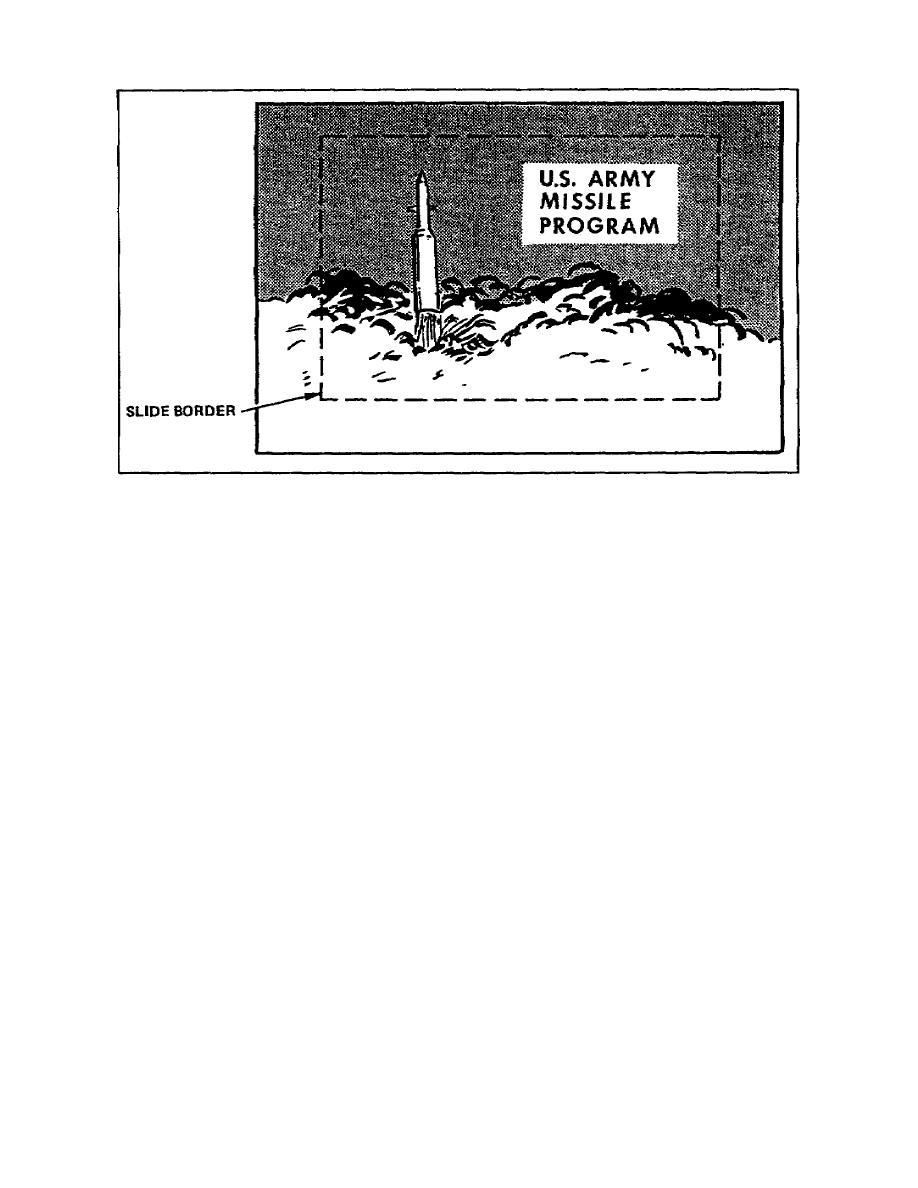
Figure 217. Onesixth rule applied
(2) Rule provide safety margin. As you see, the onesixth rule
provides a substantial safety margin. When the television studio uses a
camera equipped with an image orthicon tube, the safety margin has
significant importance. A camera with an orthicon tube causes the
picture to rotate slowly and imperceptibly to prevent the image from
being semipermanently imprinted on the tube. Though the average viewer
cannot detect this rotation (1 to 2 times per minute), the camera shifts
the framing of the picture on the camera for 20 to 30 seconds. If the
original graphic does not have an adequate safety margin, the camera
would have the picture correctly framed when it first appears and the
image would appear misframed after the orbiter shifts it.
c. Designing Television Graphics. You, the camera operator, and
director must have a thorough understanding of the intended use of
graphics designed for television. There are times when the graphics
remain confined and are seen in its entirety on the screen, and at other
times the graphics bleed off and out of the picture area.
When designing graphics for television, an agreement between yourself,
the camera operator, and producer about the framing arrangement used for
graphics helps eliminate any doubt about the intended viewing area and
important content area. Once you have reached this agreement, you
develop a mask for the agreed format. When the camera operator places
the mask over a graphic and correctly frames the display area, he can
move the camera toward or away from the graphic and the camera maintains
the
2-27
SS0530



 Previous Page
Previous Page
